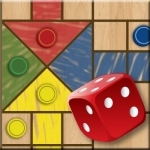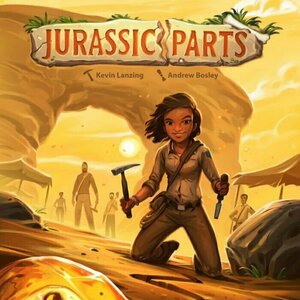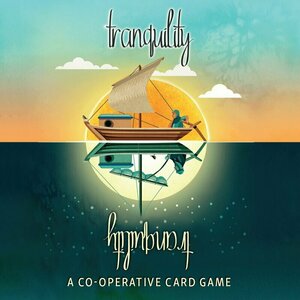
Basketball Stat Tracker HD
Sports and Productivity
App
Basketball Stat Tracker takes basketball statistics to a new level. Coaches, scouts, parents, and...
Purple Phoenix Games (2266 KP) rated Talisman: Kingdom Hearts in Tabletop Games
Dec 10, 2020
In Talisman Kingdom Hearts (which I will now call simply Talisman for this review) players will be taking on roles of Kingdom Hearts characters to traverse the world with the ultimate goal of reaching the Door to Darkness and sealing it forever. The player who seals the Door ends the game, but it does not necessarily mean they will win this semi-cooperative-but-mostly-competitive roll-and-move game.
DISCLAIMER: We were provided a copy of this game for the purposes of this review. This is a retail copy of the game, so what you see in these photos is exactly what would be received in your box. I do not intend to cover every single rule included in the rulebook, but will describe the overall game flow and major rule set so that our readers may get a sense of how the game plays. For more in depth rules, you may purchase a copy online or from your FLGS. -T
To setup, follow the instructions in the rulebook. Each player will either be dealt a character at random or may choose from the 11 characters in the box. The gigantic board goes wherever it will fit on the table, and the decks of cards are to be shuffled and stacked nearby. The Object cards will be separated by type and placed face-up near the face-up pile of Keyblade cards. Players will adjust their Stat Dials to match the starting stats printed on their character card and the game is ready to begin!
Talisman is a game played over a series of many very quick turns. Each turn is comprised of two phases: Movement and Encounters. During the Movement phase within the Outer and Middle Regions the active player will roll 1d6 and decide to move clockwise or counter-clockwise that many spaces around the board. Once within the Inner Region players will move one space at a time and no longer need to roll. Once a player lands on a space they will have Encounters while stopping.
Encounters on a space may involve several cards in play. Spaces on the board will have written instructions or merely iconography to instruct players what to do on each space. If drawing an Adventure Card from the deck, the active player may come across enemies to fight, followers to recruit, or even items to help in their journeys.
Combat is pretty slick and easy in the game: the player has a base Strength or Magic stat on their dials to which is added the result of a die roll. Compare this to the enemy’s matching base stat plus their roll. The larger result wins the combat. The player takes the enemy card as a trophy when they win, and loses a Health value when they lose and the enemy typically stays on the board space until defeated.
Play continues in this way (with a few more surprises along the way that I will have you play to discover on your own) of taking turns moving and encountering spaces until one player seals the Door to Darkness. Players are then awarded VP for various numbers of cards, where they end up on the board, stat differentials, and other means. The player with the most VP wins the game!
Components. This is a large box and comes with several different types of components. The first is a monstrously-sized game board that takes up a lot of space. That’s not at all bad, but it is certainly a busy board. There is so much information and artwork on the board, and also may have tokens set upon it to be linked to cards on the table. With over 200 cards in the box along with player character cards, stat dials, and 11 plastic minis you get a lot in the box for your money. I would say that all of the components are of excellent quality and I have no qualms with any of them aside from the very large and very busy main board.
I have some good and bad news here. First the bad. This plays somewhat similarly to a game I happen to have very lukewarm feelings for: Jim Henson’s Labyrinth. In both games players are rolling a die and deciding which direction to travel in order to have an encounter on the space. Combat is decided primarily by stats and die rolls with only the Fate tokens in Talisman to assist with a re-roll of one die. Combine that with the frustration of needing to land exactly on a space on the board in order to progress to the next Region inward and players may be volleying themselves back and forth trying to roll just the right number to hop into the Middle or Inner Regions.
That all said, I still do enjoy this game. Yes, I like it because of the art and the theme. I have always said that I prefer my games to have great art and a great theme before I start to care about mechanics and other attributes. This is a case in point. I love the look of the game, the table presence, the Kingdom Hearts IP, and I typically do not gravitate toward roll-and-move games. But, there is enough in Talisman that it keeps me interested in playing more and more. I will eventually be able to play with all of the different characters to experience their own unique special abilities and select a character with whom I most relate. I think I will enjoy that journey.
I can also play this game with my wife pretty readily, and that is a huge positive for me. I know that in time my children will be able to play this game without much arm-twisting as well as we are a huge Disney household. The rules are relatively light, and the rulebook does a great job of breaking everything down. That said, Purple Phoenix Games gives this one a hybridized and limit broken 9 / 12. If you love the Kingdom Hearts IP, or the Talisman games, or even games to introduce to newer players, then you need to take a look at Talisman Kingdom Hearts. I am still discovering things in the game that I hadn’t noticed on previous plays and that keeps me coming back for more. You won’t feel the brain burn here but you will have a great time having Chip ‘n Dale, Dumbo, and Tinkerbell following you along your adventure.
Purple Phoenix Games (2266 KP) rated Tranquility in Tabletop Games
Oct 21, 2021
Tranquility is a cooperative hand management, tile placement card game for one to five players. In it players will be attempting to create a sea of islands around which they sail their boat towards infinite paradise. They will accomplish this by laying numbered cards from their hand in numerical order before any of the players run out of chances to play a card. Oh, and there’s also no talking during the game. That’s kind of a big deal.
DISCLAIMER: We were provided a copy of this game for the purposes of this review. This is a retail copy of the game, so what you see in these photos is exactly what would be received in your box. I do not intend to cover every single rule included in the rulebook, but will describe the overall game flow and major rule set so that our readers may get a sense of how the game plays. For more in depth rules, you may purchase a copy online or from your FLGS. -T
To setup the standard game, place all the border cards around a 6×6 grid, as in the photo below. Shuffle the appropriate number of Start and Finish cards into the deck of Island cards and place that beside the grid. Draw a hand of five cards and the game may begin. Setup is similar to the multiplayer setup, with a few changes. Once the hand of cards has been drawn, the game may begin! It is the solo player’s goal to build the sea of island cards, and place the Start and Finish cards before they run out of cards to be legally played.
The game is played over many turns. Each turn players will be either playing a card from hand or discarding two cards. When a player plays a card from hand to the grid, they may place it anywhere they wish within the grid. The goal is to have each card placed numerically in order beginning from the lower left of the grid in a zig-zag pattern left to right, then ascending to the next highest level. In other words, the play area would be ordered numerically as English-speaking people read, but from the bottom up instead of the top down – like a reverse typewriter.
When a card is played, the player may choose to place it in its own area, or immediately next to another card already in play. If the new card is placed adjacent to an existing card, the player must discard cards equal to the difference between the values of the two adjacent cards. For example, if a 12 is placed next to a 14, then the player would need to discard two cards after placement. If a card is placed that is already in direct numerical order, no discards are needed. Again, a card at the right-hand edge of a row is adjacent to the card on the next row higher on the left-hand edge, and this is the most difficult aspect of the game to grasp for new players.
Should a player instead wish to discard two cards for their turn, they do so to their discard pile. After each action (playing a card or discarding two cards) the player will draw back up to their hand of five cards.
Eventually, the player will happen across the Start and Finish cards. In the solo game, when a Start card is placed (outside the grid, but in amongst the border cards in the lower left-hand corner), the player will need to draw eight cards from the draw deck, keep four, and discard the remaining eight. This eats up cards from the draw pile and draws the game closer to the end. When the grid is completed and all the numbered cards are in numerical order, the player may then play the Finish card to end the game. If all cards are properly placed the player wins! If not, they must try again. Probably immediately, because it is that kind of game.
Components. This game is a bunch of square cards in a cubic box. Now, while that doesn’t sound super exciting, the art on the cards certainly make up for the lack of component diversity. Each card is matte finished, which I prefer for cards with great art on them. And oh man, that art is something wonderful! I have always been a fan of Tristam Rossin’s art, and it is on full display here. The cards are, well, I guess I cannot find the correct word because they aren’t double-sided, but split on the horizontal, with a daytime scene on the “top” and a nighttime scene on the “bottom” (or vice-versa, however you feel). I have nothing but praise for the components here.
The gameplay is familiar in feel, but definitely a little different and a whole lot of fun. Fans of The Mind will find this familiar in that the game is structured around silent players building a grid/stack of numerically appropriate cards until the win condition is met. However, I have not been able to play The Mind solo, and Tranquility comes with solo rules in the box. So that’s a win in my book.
Now, Tranquility solo is no cakewalk. No, there are no other players to make crazy decisions to throw off any tactics planned, but you most certainly can misjudge where to place a card, and then be married to its position as you try to fill in all the appropriate cards around it. I learned that all too early when I decided my first game that I should try to divide the grid into equal sections and approximate where a 48 should go. Well, I’ll tell you now that a 48 has absolutely no business being a row above a 19 (check the photo above if you don’t believe me). Silly choices like this make for an afternoon of pondering optimal placements when unboxing your next play, and that brings a smile to my face. Any time I think about a game the next day or several days later and it entices me to play again with a different strategy, I feel is the mark of a great game.
I have yet to play this with a group (damn COVID), but I know the people I play with are going to love this one. And, honestly, I am going to love the peace and quiet as the game plays out, so I can think about my turn and then think about a different possibility once someone ruins my plans. But I tell you what, even as a solo game, this one is great. I am quite happy to keep this as a pure solo experience, but I do want to try it once with others. We do not typically give out ratings for Solo Chronicles reviews, but this one would be pretty high, I’m telling you now. Okay, I have to go get the boat ready and pack my cooler. Enjoy Tranquility!
Gareth von Kallenbach (980 KP) rated Maneater in Video Games
Jul 26, 2019
Recently I spoke with Bill Munk – Game Director at Tripwire Interactive about their pending game Maneater. I saw the game at E3 and it looks like a promising game indeed.
What is the background and setting for the game?
Maneater is a single-player, open world, action RPG set in a fictionalized version of the US Gulf Coast. Players take on the role of a baby bull shark torn from its mother’s belly. Your only tools are your wits, your jaws, and an uncanny ability to evolve as you feed. Anything and everything is on the menu… provided you kill it before it kills you.
How did the idea to play as a Shark come about?
The concept for Maneater originally came from Alex Quick, the creator of Depth and director for the original Killing Floor. Tripwire Interactive loved the over-the-top and new approach to the action RPG and open world genres so much, they decided to bring the project in-house, increasing the development staff and budget to bring the team’s concept to life.
How many levels and areas are planned for the game at release?
Players should expect a vast variety of environments to explore, including, swamps, beach resorts, sunken ship wrecks, all the way out to the deep blue sea.
What are some of the customizations that will be available and how will players be able to upgrade their character?
As players continue to eat and explore, they’ll acquire key nutrients, which can be used to help them evolve. This is where the “RPG” progression systems in Maneater really come into play. Players can choose from a variety of evolutions, that may help with increased biting power, more maneuverability, armor, and more.
What are some of the moves players will be able to do and will new moves unlock later in the game?
We really want to make sure the act of swimming and feeding feels satisfying and meaty. During our E3 demo, you saw players knifing along the surface of the water, breaching onto land, barrel rolling and charging shark bounty hunters, and diving deep into the water to gain momentum for large leaps.
What can you tell us about the enemies that players will face in the game?
Each region in the game has an Apex Predator. As you battle smaller predators and consume food in each region, the apex will do whatever it takes to protect their food source. Maneater also features a bounty system. As you wreak havoc along the coast, your infamy level will rise. This causes local bounty hunters to search for you while trying to end your feeding frenzy. Depending on your infamy level, the bounty hunters will become more difficult ranging from hunters on small skiffs, all the way up to bringing out the coast guard.
The gameplay we saw at E3 looked like fun but I was curious about how the story will advance and how do you avoid the issue of repetition in the gameplay?
Maneater is a “dueling tales of revenge” story featuring Scaly Pete, who we revealed in our newest E3 trailer. Without revealing too much, Scaly Pete is responsible for tearing you from your mother’s belly, and you manage to escape into the open waters of the gulf. That’s where our story begins. Maneater is presented through the lens of a reality TV show called “Shark Hunters vs. Maneaters” that follows the adventures of Scaly Pete as he’s hunting you throughout our world. This also allows us to follow our player shark and give a voice to the actions of the player through the show’s narrator, who is voiced by Chris Parnell.
Will the game offer multiplayer or DLC?
Right now, we want to focus on making Maneater a fantastic single-player Action RPG experience.
What are some of your favorite moves in the game?
Breaching is one of the most satisfying shark moves we’ve been working on. Breaching out of shallow waters to feed on unsuspecting beach goers on land or even on a large shark bounty hunter boat captures the over-the-top fun and ridiculousness we’re aiming for with Maneater. We’re also working really hard on what we call the “whip-shot”, where you can tail whip anything that’s in your mouth, turning objects into weaponized projectiles.
What can you tell us about the music and sound effects in the game?
We’ve been working really hard on our dynamic music system, that is constantly adapting to what the player is doing throughout the game. It’s also been an interesting challenge creating sound effects for above the water with boats, explosions and civilians and then creating a whole new set of sound effects for the underwater world, including for the underwater wildlife, underwater sounds of the boats and swimmers and so much more.
Are you planning on being at PAX West with the game?
We can’t wait to tell you more about our plans for Maneater at future shows. In the meantime, we’d recommend your readers follow @maneatergame on Twitter for the latest.

Classic Ludo Offline & Online
Games
App
NEW: Multiplayer Online with Facebook Friends available now. Calling all the kings of Ludo game,...

Fireman Sam - Fire & Rescue
Games and Entertainment
App
OFFICIAL LICENSED FIREMAN SAM APP New FREE Ocean Rescue Themed Update: Includes an 25 Extra...

Evolve Basketball
Sports and Social Networking
App
Evolve Basketball App is an all in one basketball training app. It is a complete tool that allows a...
Purple Phoenix Games (2266 KP) rated Lair in Tabletop Games
Feb 13, 2020
Lair is a worker placement game in which players are racing to complete the construction of a secret lair for their evil boss, Mr. White. Played over a series of rounds, players select turn order and command henchmen to construct new rooms, collect supplies, interfere with your competitors’ plans, or dig deeper into the volcano in which this lair is housed. The first player to reach the core of the volcano, thus completing the lair, is the winner!
Disclaimer: We were provided a copy of Lair for the purposes of this review. I do not intend to rehash the entire rulebook, but rather provide an overview of the rules and comment on the gameplay. For a more in-depth look at the rules, find the game at your FLGS or directly from the publisher! -L
To setup, place the foundation cards at the top of the table and then place 4 elevator cards in a single line underneath the center-most foundation card, and put the Core card at the bottom of the line. Flip the top elevator card, give each player their components (Player Card, Boss token, and 2 Henchmen tokens), create a room card pool, and you are ready to go! Choose the first player as described in the rule book. To start each round, players will choose turn order. All spaces in the turn order track offer different resources/rewards (collect Work Tokens, claim room cards, etc), so going first each turn might not necessarily be best for your strategy. Once turn order is established, players take turns moving 1 worker (either a Henchmen or Boss), and possibly performing the action of the room card to which they moved. Each move costs 1 Work Token, and is paid to the “bank.” In order to perform a room’s action, you must play your Boss token to that card, and there must be a Henchmen token already in the room. Here’s the catch – if the Henchmen token belongs to an opponent, you pay THEM 1 Work Token (instead of the bank) for having moved into a room that they have claimed. Do you want to use a room action enough to justify giving an opponent another Work Token to be used against you? Or can you rework your strategy to avoid using that action? Play continues in the round as long as players have Work Tokens to spend. Once you run out of actions, or choose to stop, you ‘retire’ and pass until the next round begins. There is an incentive to retiring early, though – the first player to retire in a round is the first player to choose their turn order in the next round. Play continues until one player has reached the final spot on the elevator track, the Core. The game immediately ends, and that player is the victor!
So how does Lair play? In my opinion, it’s a great little game. There is so much strategy involved for such a small game, and that is really what takes it to the next level for me. Let’s start with selecting turn order. In most games, this means vying for first dibs in the next round. In this game, however, each different turn order slot provides different resources/rewards. Depending on your strategy, you may really need that 3rd slot, or even the last one! So going first is not necessarily always the best thing in this game. You have to balance the risk of going later in the round with the reward of your chosen resources. The next strategic part of this game has to do with Henchmen placement. As I stated earlier, in order to use a room’s action, you must move your Boss to that card, and there must already be a Henchmen present. If the Henchmen belongs to an opponent, you pay them instead of the bank. This is vital because Work Tokens are what allow you to take turns, so paying an opponent means giving them a chance for another turn next round. Is it worth rewarding an opponent for use of a room action? On the flip side – can you strategically place your Henchmen to ensure that opponents have to pay you to complete their goals? The Boss may be in charge, but the Henchmen are the underdogs in this game for sure.
Components. The components are pretty good quality in this game. The cards are nice and thick, the art is thematic, and the wooden and cardboard tokens are sturdy. No complaints there. The only qualm that we had with Lair has to do with iconography. Every possible action has a corresponding symbol, and that is what is shown on the card. The downside is that there are so many symbols and icons, so there is a bit of a learning curve when it comes to playing Lair for the first time. To alleviate some of the confusion, the game comes with some nice reference cards, and the symbols do get easier to recognize with more plays. But just be warned: at first you may be a little confused with all of the symbology.
As you can see by our ratings, we kind of had mixed feelings about this one. For a game that seems so small and light, it actually has a lot of bulk to it. Between strategic choices and learning symbology, this might not be a game we can just pull out for a quick filler, but I think that it’s good enough to stand on its own. Sometimes physically smaller games can be overlooked, but don’t let the size fool you – Lair packs a punch. Purple Phoenix Games gives Lair a nefarious 12 / 18.

Jurassic Parts
Tabletop Game
Jurassic Parts is a small box area enclosure and set collection tile game featuring dinosaur...




